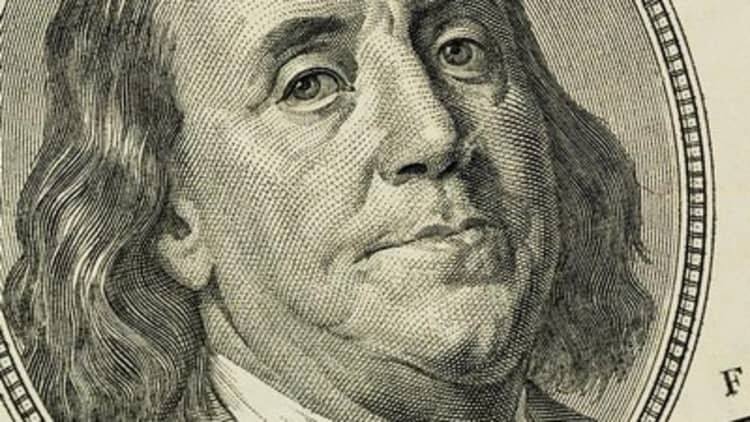
There are many strong contenders to be the chart of the year.
Some point to oil prices, which shockingly plunged 50 percent in a matter of months. Others would look to the S&P 500, which exploded higher for a third year in row and has closed at a record high 53 times (so far), more than 20 percent of 2014's trading days.
They're each compelling stories, but neither is as impactful nor as important as the breakout of the U.S. dollar.
Presenting the chart of 2014: the broad trade-weighted dollar.
The trade-weighted dollar tracks the U.S. greenback's value against a basket of other currencies, representing both developing and emerging markets. It's a broader measure than the regularly cited dollar index and the best indication of how a strong dollar hurts American companies that do business overseas.
Read MoreETFs for a resurgent US dollar
The broad trade-weighted dollar is up 9 percent this year, now at the highest point since March 2009, when financial crisis fears had risk-averse investors pouring into the U.S. currency. It's well above its average historical price over the last 15 years and now just 3.6 percent away from reaching those crisis highs.
This time though it's not about a flight to safety. Investors are flocking to the dollar because they like it. The U.S. economy has outperformed and American assets are in vogue.
The move has been absolutely stunning.
Break apart the trade-weighted dollar into individual pairs—the currency has strengthened nearly 12 percent against the euro this year, 13 percent against the yen and 18 to 19 percent against the Norwegian and Swedish currencies.
Read MoreThe biggest fund flops of 2014
The move is more dramatic when weighed against the trouble spots of 2014. The dollar has gained 44 percent versus the Russian ruble and 24 percent versus the Argentine peso. In fact, the U.S. greenback has strengthened against all developed and emerging currencies in the past 12 months.
"The rise of the U.S. dollar in 2014 is remarkable both by its intensity and weak support from expectations of Fed tightening," according to Sebastien Galy, FX strategist at Societe Generale.
"It tells us much about the intensity with which other central banks have tried to weaken their currencies," he said.
In other words, it's not just a story of U.S. economic strength in the face of global weakness, but also the contrast to major central banks seeking to weaken their own currencies in the name of growth and export competitiveness. That trend should continue in the new year and ultimately fuel more worrisome trade tensions.
"The odds are that the U.S. dollar strength can go much further than currently expected, similarly the odds of ... trade barriers are steadily rising," Galy warned.
As if that wasn't enough, expectations that the Fed will begin to raise interest rates in the second half of 2015 have many believing the dollar has plenty of room to run.
"The strength of the U.S. labor market and U.S. economy are making the Fed more confident that it can begin to raise rates next year," wrote Lee Hardman, currency strategist at Bank of Tokyo Mitsubishi in a note after the last Fed meeting in mid-December.
"The market is still not convinced that the Fed will tighten even at that more modest pace ... leaving scope for U.S. short rates to continue to increase in the year ahead, supporting a stronger U.S. dollar."
Beyond the stunning breakout of the buck, the move is significant because the dollar is the backbone of the global financial system. It influences prices of all major commodities, the largest and most liquid debt and equity markets, and the world's largest economy.

"The rebound in the dollar is now reaching levels that can begin to impact trade competitiveness into 2015 and is likely to have a meaningful impact on reported foreign profits during Q4 2014," wrote Bob Sinche, FX strategist at Amherst Pierpont Securities.
Read MoreSafe-haven yen surges investor nerves
Beyond trade, the strong dollar could continue to drag down the price of commodities, which move inversely to the buck. Already the CRB commodities index, comprised of everything from cocoa to copper to corn, is at its lowest point in 4 ½ years.
Bottom line, the broad-trade-weighted dollar is sending a powerful message: the U.S. is the global growth engine right now.
The bullish performance carries important risks, rewards and ripple effects that will dominate the investing landscape of 2015.


